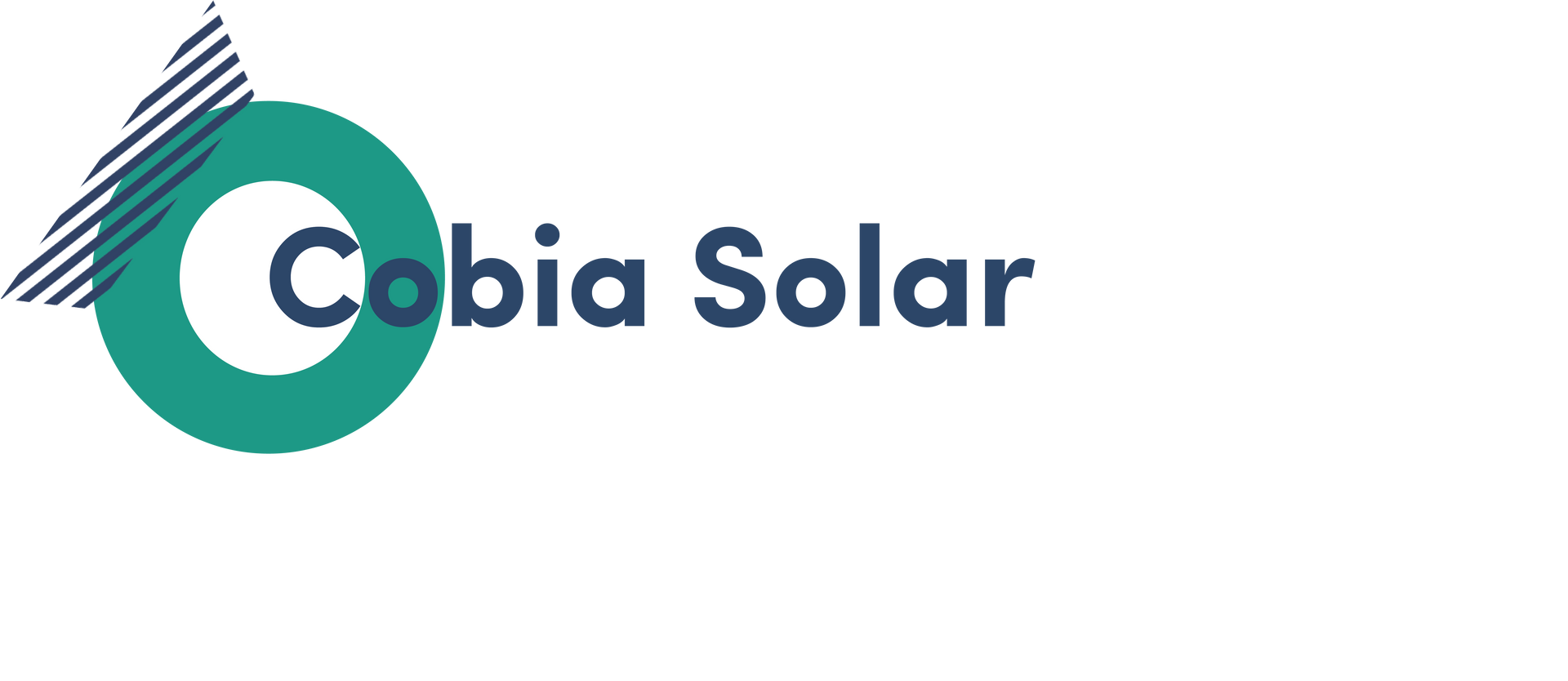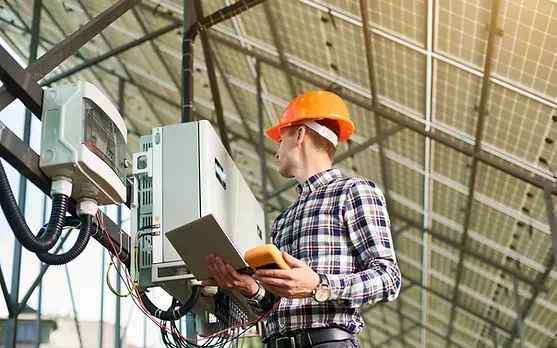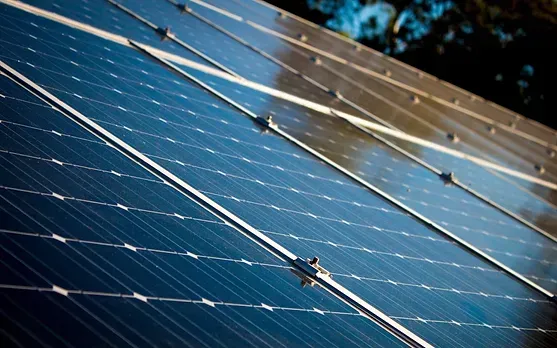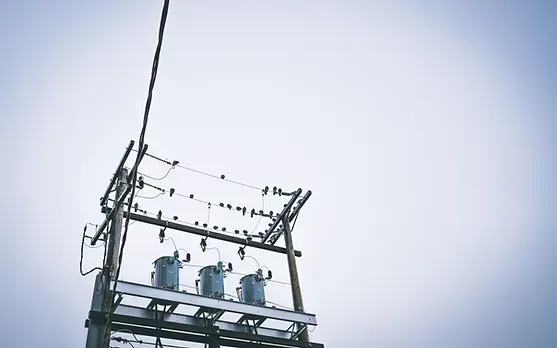Solar Explained
If you want to learn more about how solar photovoltaic (PV) panels convert sunlight into electricity, this is a good place to start!
Solar Panel Technology
Converting the Electricity
Delivering the Power
Photovoltaics (PV)
Photovoltaics is a technology used to convert sunlight to electricity. Solar PV panels will be used and designed to achieve optimal energy production on the Cobia Solar Project. A number of solar cells electrically connected to each other and mounted in a support structure or frame is called a photovoltaic (PV) module. Multiple modules can be wired together to form an array. Photovoltaic modules and arrays produce direct-current (DC) electricity.
Inverters
Inverters convert the direct current (DC) electricity from the solar panel into alternating current (AC) electricity, so it can be added to the utility grid system.
Transformers & Collector Systems
The electricity generated will be collected on-site using underground cables to the project substation. The project substation will aggregate and feed the electricity to the grid and includes a transformer that converts – or “steps up” – the electricity to the same voltage carried by the grid's transmission lines.
Solar Panel Technology
Photovoltaics (PV)
Photovoltaics is a technology used to convert sunlight to electricity. Solar PV panels will be used and designed to achieve optimal energy production on the Cobia Solar Project. A number of solar cells electrically connected to each other and mounted in a support structure or frame is called a photovoltaic (PV) module. Multiple modules can be wired together to form an array. Photovoltaic modules and arrays produce direct-current (DC) electricity.
Converting the Electricity
Inverters
Inverters convert the direct current (DC) electricity from the solar panel into alternating current (AC) electricity, so it can be added to the utility grid system.
Delivering the Power
Transformers & Collector Systems
The electricity generated will be collected on-site using underground cables to the project substation. The project substation will aggregate and feed the electricity to the grid and includes a transformer that converts – or “steps up” – the electricity to the same voltage carried by the grid's transmission lines.
Panel Composition
Photovoltaic (PV) solar panels are composed of monocrystalline solar cells confined between glass with a metal frame. The silicon, glass, and metal framing used in the manufacture of solar panels are non-toxic. The interior components of a PV solar panel consist of solidified materials that won't ever leak liquid or gaseous materials into their surroundings, causing no harm to humans nor the environment.
Land Stewardship
Cobia Solar will maintain and protect the leased land during the life of the Project, after which it will revert to the owner’s control and be available again for traditional farming after the full decommissioning of the site. Solar development and traditional agriculture can co-exist side-by-side and increasingly are found together. Responsible solar development provides benefits to both agriculture and local ecosystems by improving soil health over time, increasing biodiversity, retaining water and topsoil with deep-rooted vegetation, and nurturing native pollinators which support local food production.
FAQ
-
What happens when a land lease expires or project ownership changes?
There is a contractual obligation by a solar farm owner to maintain the solar system and facilitate its removal at the end of the lease or lifetime of the plant. If the project’s ownership should change during the term of the lease, the new owners will assume the same contractual obligations of maintenance and removal.
Additionally, solar panels retain value as scrap materials after their useful life, which significantly offsets the cost of their removal. Many communities now set specific decommissioning and financial standards to ensure the successful removal of a project after it ceases operation.
-
Are solar farms harmful to the environment?
Solar farms do not emit any gases or release anything into the environment. When the system is removed, all of the components can be recycled. Solar farms are not toxic.
-
Do solar farms generate a lot of noise?
Solar farms produce very minimal amounts of noise which generally cannot be heard, even if standing right at the facility’s fence-line. The inverters, which convert direct current to alternating current, produce a small humming noise, which cannot be heard at the fence line. For farms using a tracker system, the tracking system is also virtually silent and is generally not audible.
-
Do solar farms generate electromagnetic fields?
Whenever there is a flow of electricity, an electromagnetic field (EMF) is generated. Solar panels generate electricity as direct current (DC) which does not generate EMFs; however, once the energy changes to alternating current (AC) at the inverter, EMFs are generated at very low levels due to the low voltage of the facility. The electromagnetic fields measured at the fence of a solar farm are typically no higher than background levels, meaning that the electromagnetic field standing next to a toaster or having a smart phone in your hand is higher then standing by the fence of a solar farm.
-
How do solar farms look?
Geenex is aware that not all people are excited about the way a solar farm looks, although we love the looks of our solar panels. For this reason it is common for vegetative screening to be used around specific parts of the solar farm boundary. We strongly advocate for the installation of vegetative screening between the solar farm and all adjoining residential properties. They may also be installed along road frontage, should the local community find this desirable.
Artificial lighting is not used on solar farms. Generally speaking lighting is not used during construction either. There may be specific times during construction when lighting may be sparsely used during morning and evening hours.
-
Do solar farms generate reflectivity and glare issues?
Solar panels are designed to absorb sunlight. For this reason their reflectivity is very low. They are also coated with an anti-reflective coating to minimize the little reflectivity there is. As such, fears related to reflectivity are unfounded. A driver driving by the system will not be blinded by the reflection of the sun and reflectivity and glare is certainly not something which will impact neighbors.
-
What is the impact on property prices and taxes?
Several experienced land appraisers have studied the impact of solar farms using a method called matched pair analysis. This is a textbook method used by appraisers for measuring the effects of proposed developments. Their conclusion is that solar farms do not negatively affect property values. We invite a certified property appraiser to most of our public hearings to help further explain his research and analysis and answer any related questions.
It is also important to note that the property taxes paid by solar farms generate significant revenue for the counties and communities they are built in, helping fund schools, services and other public works.
-
Do solar farms generate Jobs?
The U.S. solar industry currently employs nearly 209,000 solar workers and is creating jobs at a rate 12 times higher than employment growth in the overall economy. For the third straight year, the solar workforce grew 20 percent in the U.S. and is projected to continue that trend with the addition of another 30,000 workers within the next 12 months.
-
Is a solar farm a good investment?
Investment in solar projects is a stimulator for the whole economy. In North Carolina alone, there is a total of $6.7 billion in investments. In the United States, $43 billion has been invested.
Banks and even retirement funds are investing in solar. The technology is proven and secure so it involves less risk than many other traditional property income investments.
-
Are solar farms expensive?
The cost of solar has come down over the last 5 years by more than 70% and is projected to continue to fall by 10% each year. As oil, gas and coal prices are often volatile, solar energy is stable and continues to decrease.
Solar technologies offer a number of environmental benefits such as the reduction of greenhouse gas emissions and less waste over fuel-based energy sources. The reliance on solar energy will also help alleviate the future health and environmental concerns that can be experienced with other energy resources.
-
What are the environment and local benefits?
Solar farms generate clean, renew-able energy that has a number of positive impacts on our environment. Solar facilities do not generate greenhouse gases and actually reduce air pollution by offsetting carbon emissions.
The use of solar power allows communities to produce energy locally and decreases our entire country’s dependence on foreign energy resources. The more solar farms we put into service, the less reliant our communities will become on oil, coal, natural gas, and nuclear power.
-
How best to describe the difference between Invenergy’s transmission project and a Geenex solar project as it pertains to “taking” of land?
Using eminent domain for solar farms is unlikely in any case; however, Geenex is not a public utility and as such cannot use eminent domain. Rather, as a private development company, we work on an individual basis with our participating landowners to come to mutually agreeable contract terms.












